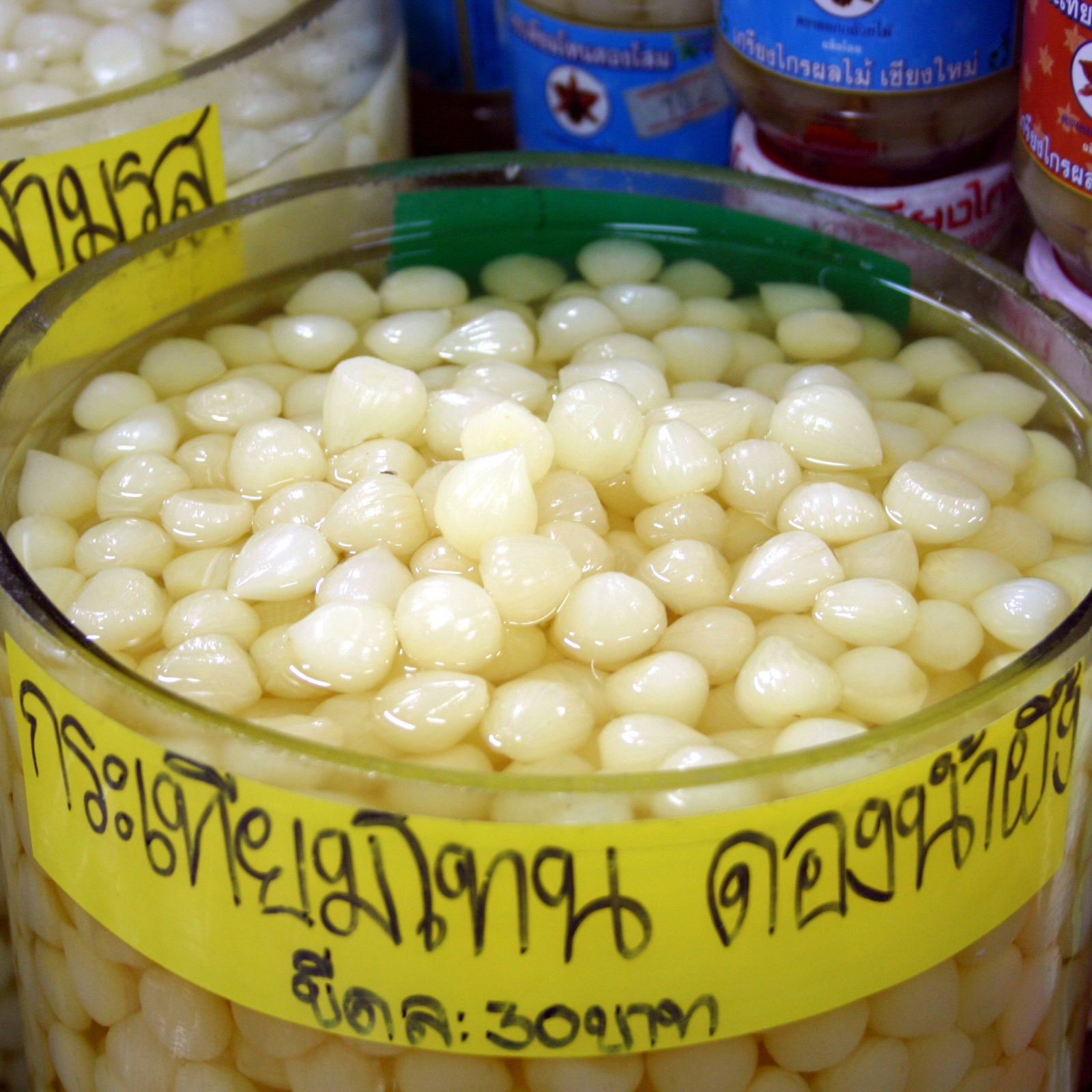Garlic
Is there any spice more universal than garlic? It’s certainly as fundamental to Thai cuisine as the chilli pepper, if not more so. There are few dishes indeed that don’t call for a little garlic, if not a lot. Food stall owners will typically buy garlic in large bunches that look perfect for protecting your house from vampires, but seem a bit much for cooking. The large quantity is due to Thai garlic’s milder taste. It takes a lot of garlic to give recipes the strong taste Thais expect. I soon found when learning how to cook Thai food that one of the most fundamental rules of the cuisine is: “There’s no such thing as too much garlic.”

I sometimes wonder if the abundant use of garlic is due to its wide availability, or if it’s availability is due to high demand. Garlic is the traditional second crop of northern farmers. Once the rice crop is harvested sometime in the cool season, around October to December, the farmers will typically plant a second crop. What is planted for the second crop traditionally depends mostly on how much water is still available for irrigation. Garlic requires a bit more water than other possible crops, but since it is such an essential ingredient as much as a quarter of the land around Chiang Mai was used to raise garlic as a second crop.
You almost never see fresh-picked garlic on sale in the markets, even the wholesale ones. Instead, the spice vendors will have great piles and baskets of garlic that has been partly dried on sale. The wholesale markets will often have great conical stacks of bunches of whole bulbs that have been bound or twisted together by the stalks. All stalls will have baskets full of separated cloves, usually in various sizes. The type most favored by Thais comes in very small cloves. This type has a very thin skin. Thai cooks will often simply crush the cloves with the flat blade of a cleaver and throw the whole thing into a stir-fry. It is certainly efficient, although it can be a bit of a surprise to western diners.
You will also see baskets full of very large cloves of garlic. It will come as no surprise that Thais call this “elephant garlic.” Elephant garlic is almost never used in cooked dishes. Instead it is often used in salads, dips and as an accompaniment to meat snacks such as raw pork sausage or Chiang Mai sausage. Another type of garlic has small bulbs consisting of just a single clove. This type of ‘pearl’ garlic is mostly used for pickling, and that is the only form that you usually find it in the markets.

Garlic is one of the oldest herbs in use. Its use was recorded in Babylonia as early as 3000 B.C. It was found in the tomb of Tutankhamen, while in Asia, it was mentioned in traditional Chinese medicine books starting around 500 A.D. Traditionally, garlic was used to treat colds and the flu, as well as chronic coughs such as bronchitis. It was also used for skin problems such as acne, and in Ayurveda medicine, garlic is considered an aphrodisiac. In addition to these traditional uses, modern medicine has found garlic useful in slowing arteriosclerosis, and reducing the risk of additional heart attacks in myocardial infarct patients.